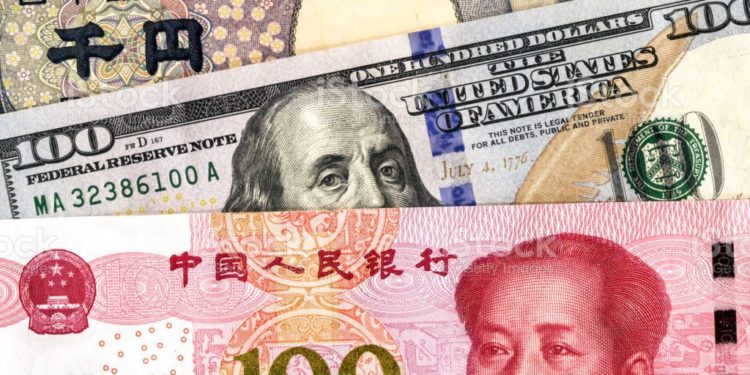The yen tumbled to its lowest against the dollar in 24 years on Monday, as the gap between Japanese and U.S. benchmark yields widened after red hot U.S. inflation data drove U.S. Treasury yields higher.
The dollar rose as high as 135.22 yen, its highest since October 1998, having gained for each of the past seven sessions, as the policy divergence between hawkish central banks overseas and the dovish Bank of Japan (BOJ) becomes ever more apparent.
Japan’s currency has been weakening for months, accelerated by the US Federal Reserve’s aggressive monetary tightening to tackle soaring inflation caused by the war in Ukraine and other factors.
However, unlike the Fed, the Bank of Japan has said it will stick with its long-standing monetary easing programme which it hopes will lead to stable growth.
The increasingly polar policies have strengthened the greenback, and on Monday one dollar bought 135.19 yen, a level not seen since October 1998 during the Asian currency crisis and marks a dramatic drop from January rates of around 115 yen per dollar.
“The ongoing backdrop to the yen’s fall is the growing gap between long-term interest rates in Japan and the United States,” Takahide Kinouchi, an executive economist at Nomura Research Institute, said in a recent commentary.
As higher oil prices fuel US inflation, “expectations are growing stronger that aggressive US monetary tightening will continue for the time being, causing US yields to rise further.”
US consumer prices for May hit a new four-decade high, rising 8.6 per cent and topping what economists thought was the peak in March.
However, in Japan, inflation has only just hit the central bank’s long-term target of two per cent.
And while the figure represents a seven-year high, the BoJ sees current inflationary pressures as temporary and believes its monetary policy is necessary to produce more long-lasting growth.
Read also; Japanese Yen Drops to a 20-Year Low Against the Dollar




